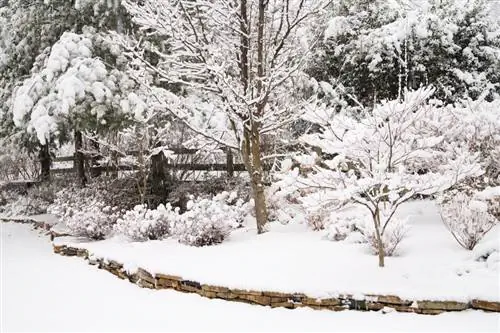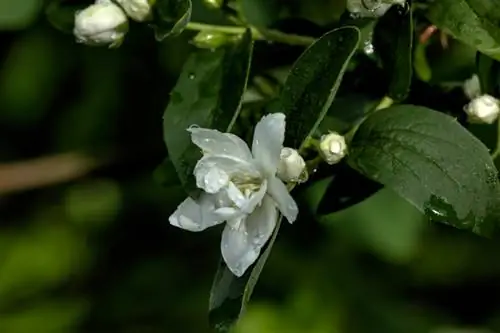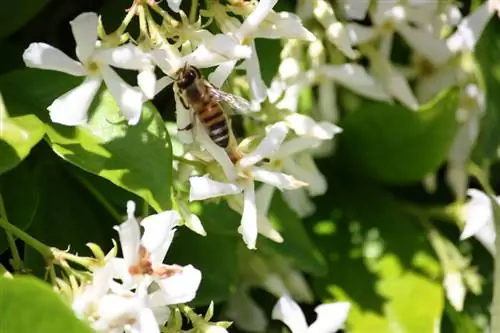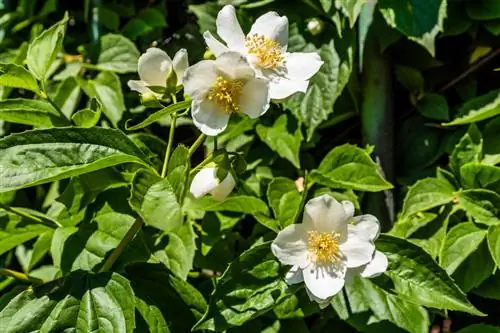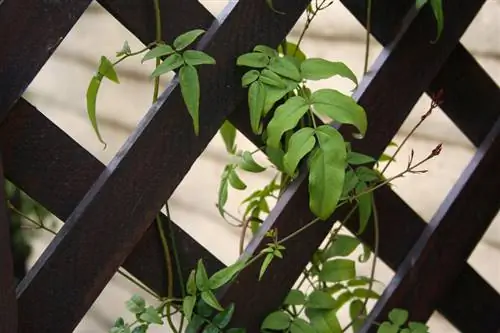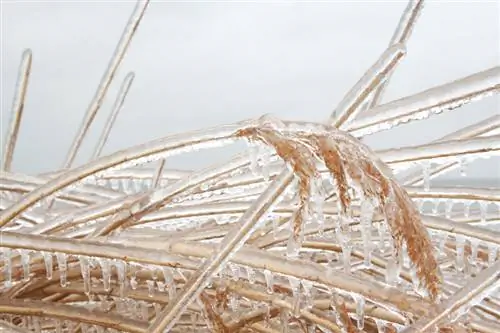- Author admin [email protected].
- Public 2023-12-25 17:45.
- Last modified 2025-01-23 11:20.
In contrast to real jasmine, false jasmine or pipe bush is completely hardy. The ornamental shrub also copes well with very low temperatures. Special overwintering is only recommended for young plants.
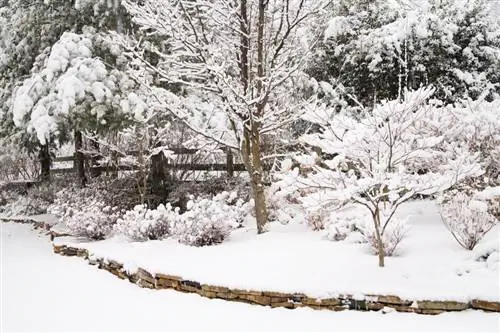
Is false jasmine hardy and does it need winter protection?
False jasmine (pipe bush) is hardy and can tolerate lower temperatures without winter protection. Only young plants that were planted in autumn should be protected from frost in the first winter by laying down a mulch made from garden materials such as compost, leaves or straw.
False jasmine is a native plant
False jasmine has been grown in Central European gardens for centuries. The ornamental shrub is therefore well adapted to the local conditions and can also tolerate very low temperatures without winter protection.
Only protect young plants from frost
Once a false jasmine has grown well, it is completely hardy. You should only water it occasionally when it is very dry in spring and winter.
It's different with false jasmine, which you only planted in the fall or propagated yourself from cuttings.
Young bushes should be protected from frost in their first winter. The roots have usually not yet penetrated so deeply into the soil that the plant is not yet completely hardy.
Protect from frost and drying out with mulch covers
To protect against frost, put a layer of mulch on young bushes in autumn. You can use organic materials from the garden for this:
- Compost
- Leaves
- Lawn cuttings (without flowers!)
- Straw
A mulch layer also prevents the soil from drying out too much. Weeds cannot emerge, which makes garden maintenance much easier. The decomposing mulch material also provides new nutrients.
A sensible measure is to simply leave the fallen leaves of the false jasmineunder the bushes. It acts like a mulch and therefore offers good protection from very low temperatures. At the same time it fertilizes the soil.
False jasmine loses all its leaves in autumn
False jasmine is a deciduous shrub. It produces a lot of leaves in spring. In autumn the leaves turn yellow and fall off. This is not an indication of an illness, but rather a completely natural process in many hardy plants.
If you want to plant false jasmine as a hedge, you should consider this. In winter, the hardy ornamental shrub does not form a dense privacy screen.
Tip
False jasmine used to be popular in cottage gardens because the many flowers attracted bees and insects. That's why false jasmine is also popularly called farmer's jasmine.

